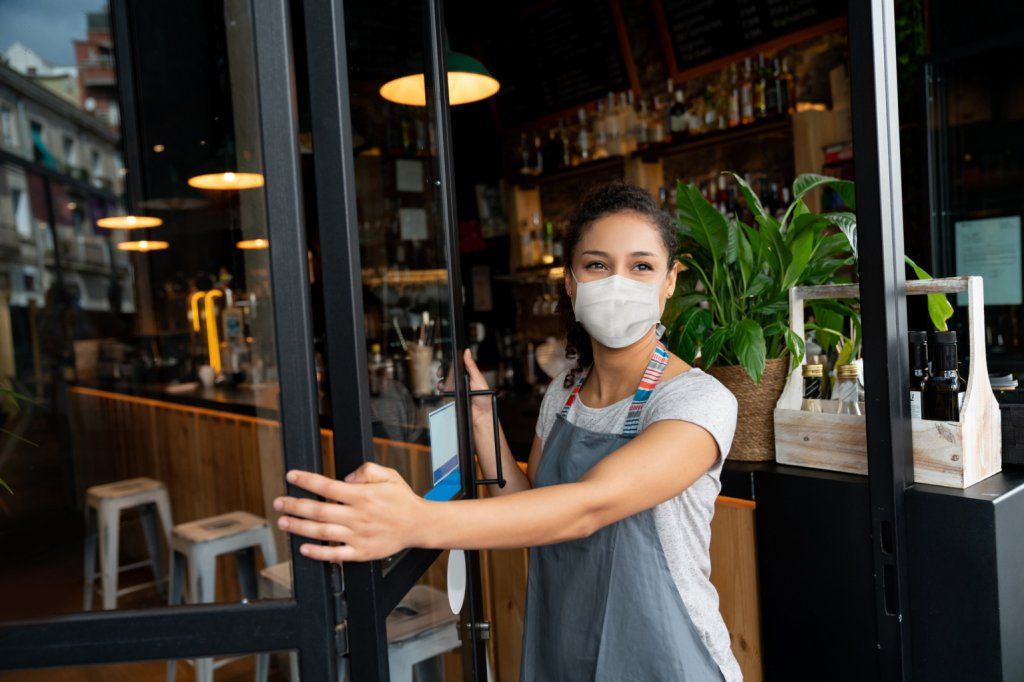Are Your Covid Precautions Up to Par?

It’s hard to turn on the television or scroll through your newsfeed today without hearing or reading something about COVID-19. COVID-19 is a respiratory disease that is caused by the SARS-CoV-2 virus. The recent COVID-19 outbreak and its massive spread throughout the world have affected nearly all aspects of our daily lives, including travel, tourism, trade, food supplies, financial markets, and the workplace.
In order to continue to operate businesses responsibly and reduce the impact of COVID-19 conditions as much as possible for employees, customers, and the public, it is imperative that all employers develop a plan for COVID-19.
How a COVID-19 outbreak could impact workplaces
Similar to the flu and other viruses, COVID-19 has the potential to have a massive impact in the workplace. And, until a vaccine is developed and herd immunity is established, any outbreak also has the potential to turn into an extended event. As a result of a COVID-19 outbreak, workplaces could experience:
- Absences in the workplace. Employees could be absent for an extended period of time for a number of reasons, such as if they are sick themselves, caring for a sick family member, the caregiver of a young child when schools and daycares are closed, have at-risk or immunocompromised family members at home, or if they are simply afraid to come to work given current conditions or for fear of potentially being exposed.
- A significant change in commerce patterns and trends. Consumer demand for certain items, especially those related to infection prevention or cleaning, has increased significantly in recent months, with demand for other consumer goods, such as vacation planning, declining drastically. Consumers are also changing their shopping patterns, choosing to shop online rather than in-store, or shopping in-store at off-peak hours to limit their exposure to other people.
- Interruptions or delays in supply and delivery. Many areas of the country are still significantly impacted by COVID-19, which can lead to delays or even cancellations of shipments and deliveries (either with or without notice).
Steps to Take to Reduce Risk of COVID-19 Exposure
In this current climate, it is important that all employers, building owners, and operations specialists take certain steps and precautions, in order to create and foster a safe and healthy workplace for both their employees and clients or customers. Here are some ways that you can protect your employees while helping to slow the spread of the virus.
Before resuming business operations, thoroughly check your building to make sure that it is ready for occupancy. Evaluate the systems in your building to determine if the building is safe, and look for known hazards associated with extended shutdowns, such as the growth or presence of mold, pests or rodents, or issues with stagnant water systems. Take any remedial actions before proceeding with occupancy. Ensure the ventilation system in your building is up to code and operating properly, and increase the circulation of fresh, outdoor air as much as possible.
Identify where and how employees could potentially be exposed to the virus while at work. As an employer or building manager, you are responsible for providing a safe and healthy workplace. Walk through your building or workspace to identify any potential hazards that could increase the risk for COVID-19 transmission. Take note of any common areas where social distancing would be difficult, such as break rooms, cafeterias, locker rooms, waiting areas, meeting rooms, and points of entry and exit. Develop a plan for safe social distancing, and then include all employees in your communicated plan.
Develop hazard controls to help reduce transmission among employees. There are a number of steps that you can take to help reduce the potential spread of COVID-19 among your employees, including:
- Modify or adjust workstations and furniture to ensure safe social distancing.
- Physically separate employees in congested areas of the building, including meeting rooms, break rooms, and more. Use signs or visuals to help remind people to stand when physical barriers are impossible.
- Take steps to improve the ventilation system in your building. Consult with a HVAC professional for ways to increase the overall percentage of outdoor air, increase total airflow to all occupied spaces, use natural ventilation, and more.
For the latest information about COVID-19 transmission, continue to consult the CDC’s website. And to stay up to date on what’s going on in commercial real estate, subscribe to the CBC Worldwide blog.
A Trusted Guide in Commercial Real Estate
Coldwell Banker Commercial® provides Commercial Real Estate Services from Property Sales and Leases, to Property Management. Learn how our expansive network of Independently Owned and Operated Affiliates and Real Estate Professionals use their in-depth knowledge of the local market and industry trends to help businesses and investors navigate the complexities of the commercial real estate landscape.






